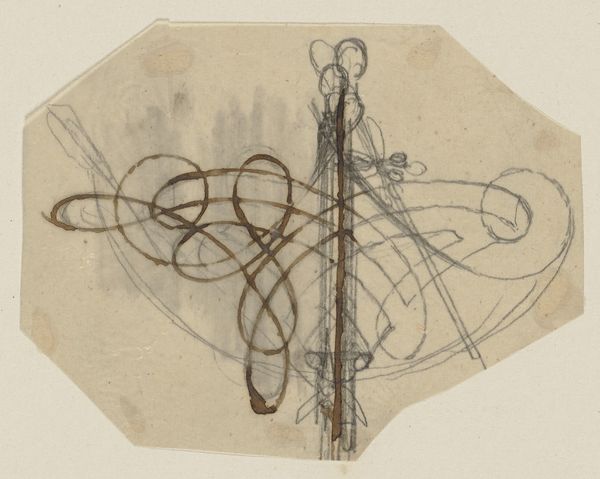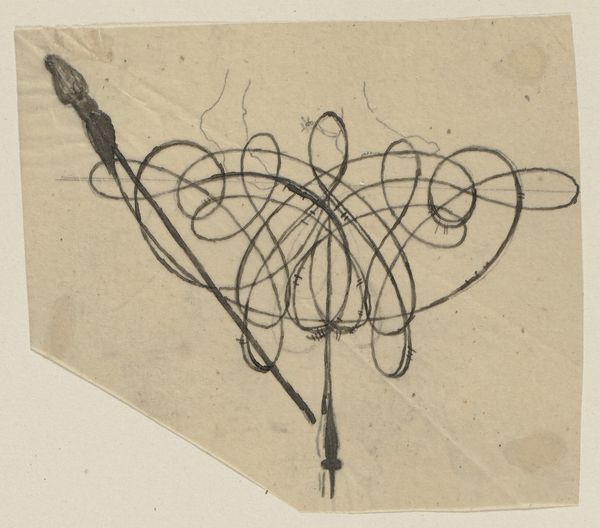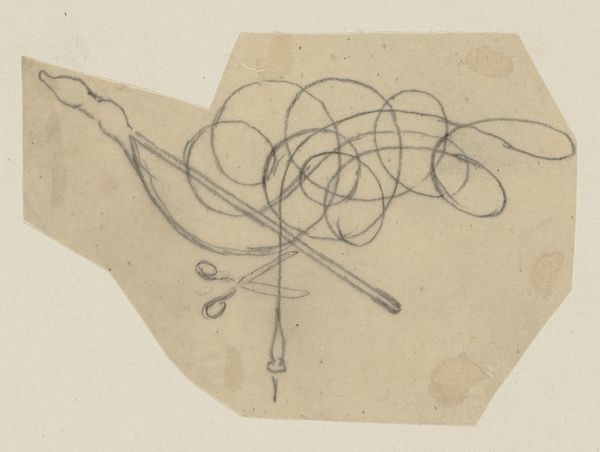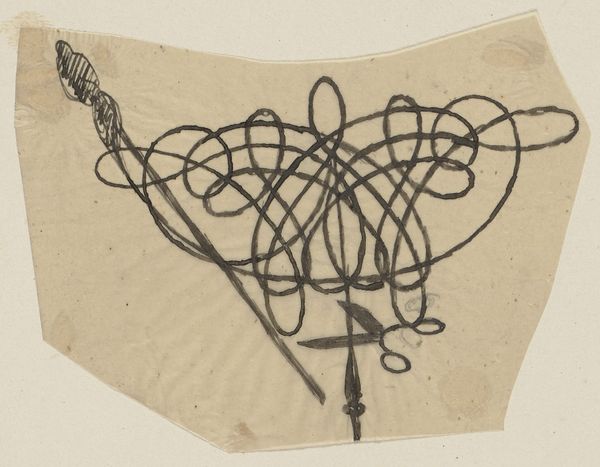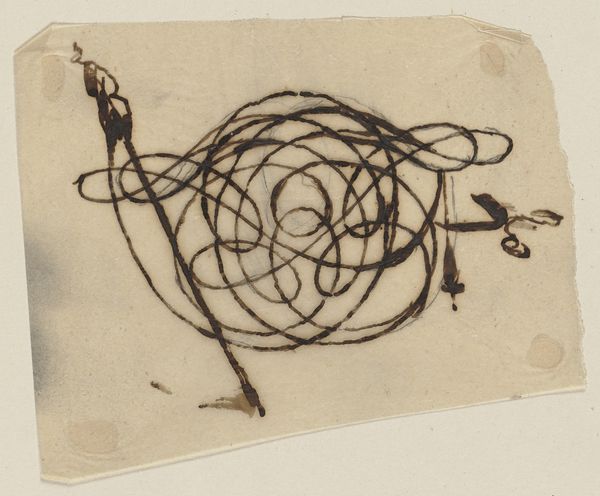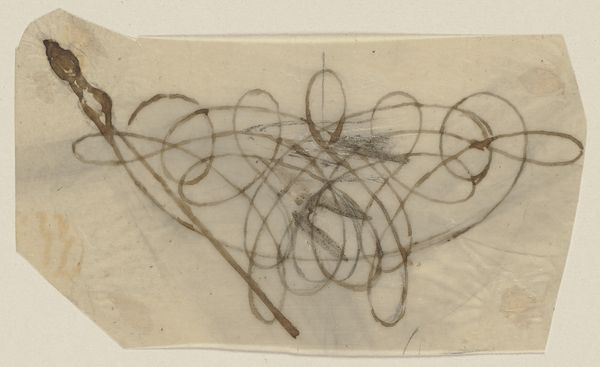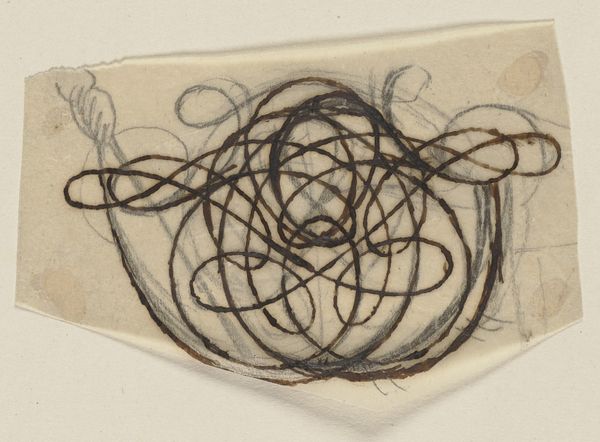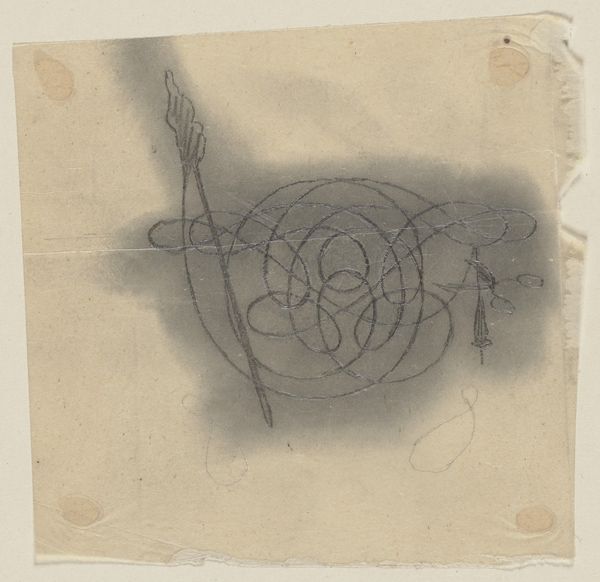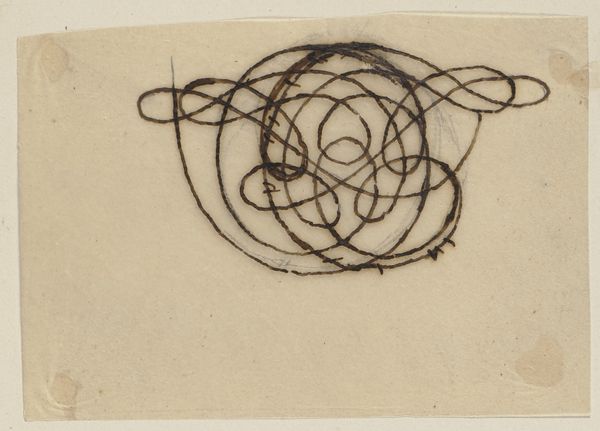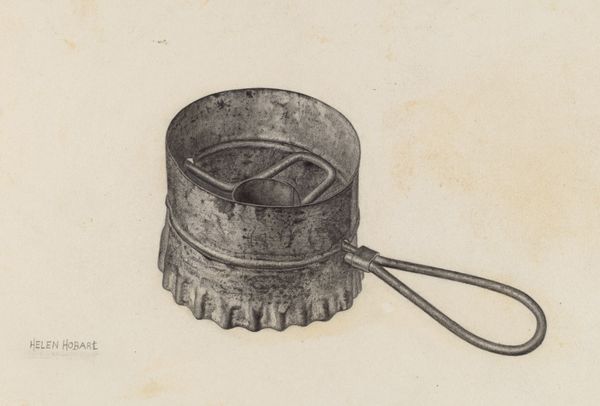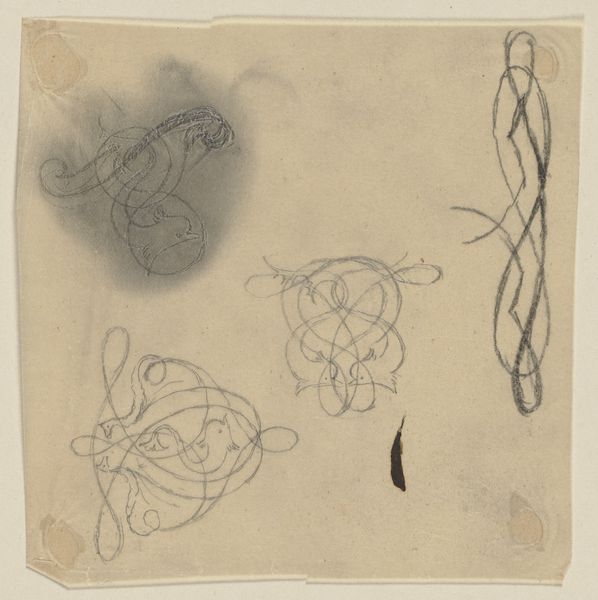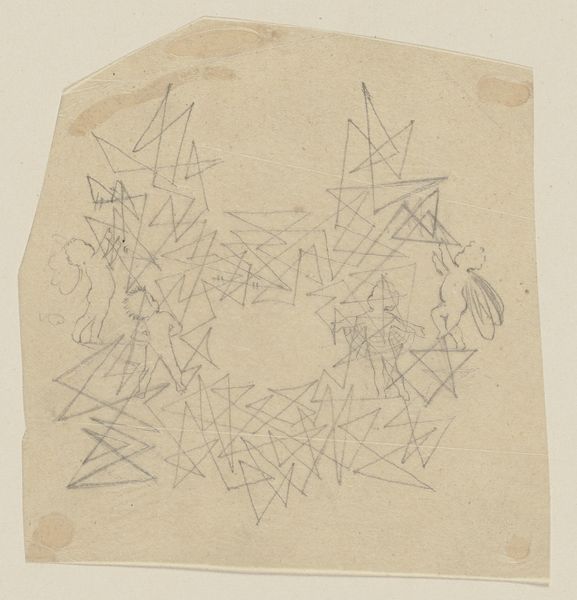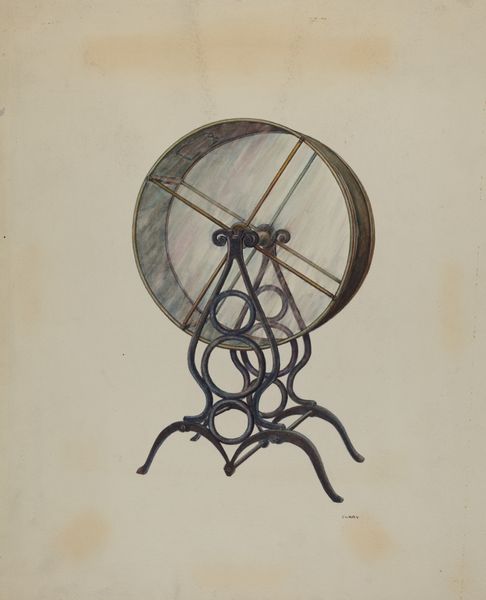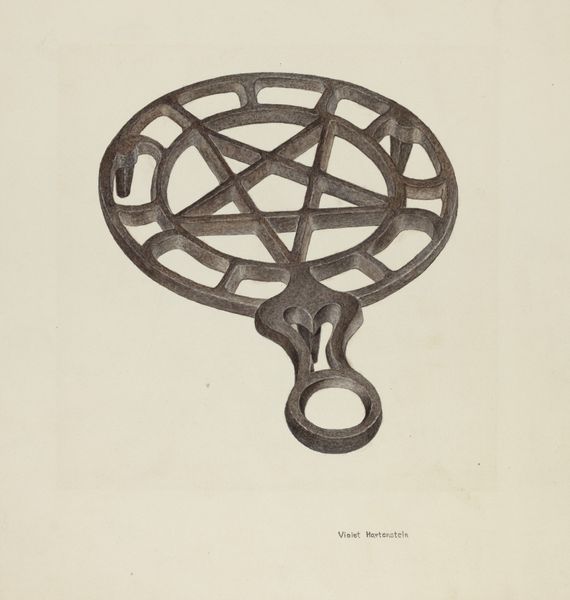
Ornament des Nick Bottom als Pyramus mit Garnspule und Schere c. 1867 - 1868
0:00
0:00
drawing, ornament, ink
#
drawing
#
ornament
#
16_19th-century
#
ink
#
line
Copyright: Public Domain
Curator: Here at the Städel Museum, we have Paul Konewka's "Ornament des Nick Bottom als Pyramus mit Garnspule und Schere" from around 1867 or 1868, a delicate ink drawing on paper. What are your initial impressions? Editor: It looks like organized chaos. These dark, looping lines almost feel frantic, but also elegant. I'm drawn to the sense of implied movement within such a contained space. Curator: Konewka was working during a period of significant social and political upheaval. I read this drawing through that lens. Nick Bottom's character from "A Midsummer Night's Dream," as Pyramus, embodies a kind of performative rebellion, right? Editor: The use of a yarn spool and scissors, juxtaposed with the figure, points to a fascinating commentary on the materials available at the time, and how they influence narrative. There’s a clear connection between the means of artistic production and the artwork's themes. Curator: Exactly! This piece, in that context, challenges conventional portrayals of male identity, doesn't it? It's like Konewka's playing with those lines—literally and figuratively. Consider the restrictions placed on theatrical representation, especially for women. Editor: Interesting perspective. From my point of view, these instruments, specifically yarn and scissors, speak volumes about labour of sewing that goes unacknowledged and invisible. These materials offer an explicit statement on creation, work, and perhaps consumption in general. Curator: Indeed, the artist draws parallels between different forms of 'making'—artistic, theatrical, and craft. These elements all meet to question artistic, theatrical and other restrictions imposed during the era on labour and representations. Editor: It encourages us to re-evaluate traditional hierarchies, doesn’t it? The drawing prompts reflections on material limitations within broader cultural, artistic contexts, in society's understanding of "work" as a concept. Curator: I agree. It highlights these hidden processes and acknowledges that artistic expression is deeply embedded in labor and the available materials of the time. It really helps see the role art can play to promote equality and challenge societal expectations, by creating alternate stories that promote different interpretations and inclusivity. Editor: Yes. When seen from this vantage point, this line art takes on deeper connotations, revealing connections between daily experience, creation, material, gender representation. Curator: Reflecting on it, I notice how this drawing reminds us of the ability of art to foster dialogue about challenging subject matter. Editor: Absolutely, looking at it now, I agree, and would now interpret these looping black ink gestures in relation to artistic development and history overall.
Comments
No comments
Be the first to comment and join the conversation on the ultimate creative platform.
